
Introduction
The Cummins C Series engines—6C, 6CT, and 6CTA—are renowned for their durability and reliability in demanding applications. However, maintaining optimal performance requires consistent and proactive maintenance combined with effective troubleshooting techniques. This guide merges essential information from routine maintenance practices and a troubleshooting guide to help you keep your Cummins engine running smoothly, minimizing downtime, and extending its lifespan.
Parts Catalog for Cummins 6C Marine Engine
Parts Catalog for Cummins 6CT Marine Engine
Parts Catalog for Cummins 6CTA Marine Engine
Routine Maintenance for Cummins 6C, 6CT, & 6CTA
1. Importance of Regular Maintenance
Regular maintenance ensures:
- Optimal fuel efficiency
- Reduced risk of breakdowns
- Prolonged engine life
- Compliance with emissions standards
Skipping routine checks can lead to costly repairs and decreased performance over time.
2. Maintenance Schedule Overview
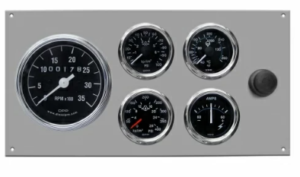
Daily Maintenance:
- Check Oil Levels: Ensure proper lubrication.
- Inspect Coolant Levels: Prevent overheating issues.
- Visual Inspection: Look for leaks, loose connections, or damaged hoses.
- Monitor Gauges: Check for abnormal readings in oil pressure, temperature, and RPM.
Weekly Maintenance:
- Inspect Belts and Hoses: Check for wear, cracks, or looseness.
- Drain Water Separator: Prevent water contamination in the fuel system.
- Battery Check: Ensure terminals are clean and secure.
Monthly Maintenance:
- Air Filter Inspection: Clean or replace if necessary.
- Fuel Filter Replacement: Maintain clean fuel flow.
- Inspect Turbocharger: Check for oil leaks, unusual noises, or shaft play.
Quarterly Maintenance:
- Coolant System Service: Check for proper mixture and flush if needed.
- Valve Lash Adjustment: Maintain proper valve timing and performance.
- Inspect Exhaust System: Look for leaks, corrosion, or blockages.
Annual Maintenance:
- Comprehensive Engine Inspection: Check all major components.
- Injector Service: Clean or replace injectors as needed.
- Check Engine Mounts: Ensure they are secure and not worn.
3. Fluid and Filter Maintenance
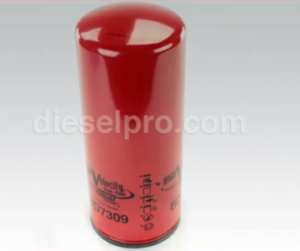
Engine Oil:
- Oil Change Interval: Every 250-500 hours, depending on usage and conditions.
- Recommended Oil: Use high-quality diesel engine oil meeting Cummins specifications.
- Oil Filter Replacement: Always replace the filter during an oil change.
Coolant System:
- Coolant Type: Use a 50/50 mix of antifreeze and distilled water.
- Change Interval: Every 2 years or as specified by Cummins guidelines.
Fuel System:
- Primary & Secondary Fuel Filters: Replace every 250 hours or as needed.
- Water Separator: Drain daily in humid environments to prevent contamination.
Air Filter:
- Inspection Frequency: Monthly, or more often in dusty environments.
- Replacement: When clogged or after reaching the service limit indicator.
4. Key Maintenance Tips

- Use OEM-Matching Parts: Ensure compatibility and reliability with high-quality aftermarket parts.
- Keep Records: Track maintenance dates, parts used, and services performed.
- Warm-Up & Cool-Down: Allow the engine to reach operating temperature before heavy loads and cool down after extended use.
Troubleshooting Guide for Cummins 6C, 6CT, & 6CTA
Despite regular maintenance, issues can arise. Effective troubleshooting helps identify and resolve problems quickly to minimize downtime.
1. Starting Problems

Hard Starting or No Start:
- Possible Causes:
- Low battery voltage
- Faulty starter motor
- Air in the fuel system
- Clogged fuel filters
Troubleshooting Steps:
- Check Battery: Verify voltage and clean terminals.
- Inspect Fuel System: Ensure fuel flow, replace filters, and bleed air from lines.
- Examine Starter Motor: Listen for unusual clicking or grinding sounds.
- Verify Engine Sensors: Malfunctioning temperature or pressure sensors can affect starting.
2. Engine Overheating
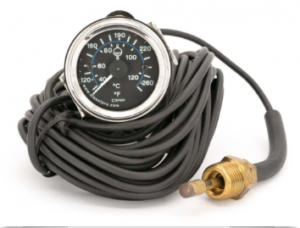
Symptoms:
- High coolant temperature gauge readings
- Loss of power
- Coolant boiling or loss
Possible Causes:
- Low coolant levels
- Blocked radiator or clogged coolant passages
- Faulty water pump
- Malfunctioning thermostat
Troubleshooting Steps:
- Check Coolant Levels: Refill as needed, check for leaks.
- Inspect Radiator: Clean debris from fins, check for blockages.
- Test Thermostat: Ensure it opens at the correct temperature.
- Inspect Water Pump: Check for leaks, worn impeller, or noisy operation.
3. Loss of Power
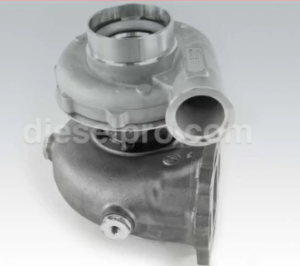
Symptoms:
- Slow acceleration
- Inability to reach full RPM
- Black smoke from exhaust
Possible Causes:
- Clogged air or fuel filters
- Turbocharger failure
- Faulty injectors
- Exhaust restrictions
Troubleshooting Steps:
- Inspect Air Filters: Replace if dirty or clogged.
- Check Fuel System: Replace filters, test fuel pressure.
- Examine Turbocharger: Look for oil leaks, damaged fins, or excessive shaft play.
- Evaluate Exhaust System: Check for blockages or collapsed hoses.
4. Excessive Smoke

Types of Smoke:
- Black Smoke: Indicates unburned fuel due to poor combustion.
- White Smoke: Suggests coolant in combustion or unburned fuel in cold conditions.
- Blue Smoke: Signals oil burning, often from worn piston rings or valve seals.
Troubleshooting Steps:
- Black Smoke: Check air filters, turbocharger, and injectors.
- White Smoke: Verify coolant levels, inspect head gasket, and check glow plugs (if applicable).
- Blue Smoke: Perform compression tests, inspect piston rings, and valve seals.
5. Oil Pressure Issues
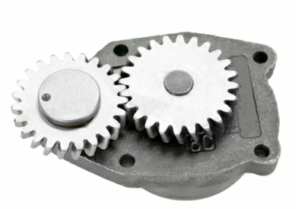
Symptoms:
- Low or fluctuating oil pressure gauge readings
- Warning lights on the dashboard
- Engine knocking or unusual noises
Possible Causes:
- Low oil levels
- Faulty oil pump
- Worn bearings or internal engine wear
- Clogged oil filters
Troubleshooting Steps:
- Check Oil Levels: Refill if low.
- Replace Oil Filter: If clogged, it can restrict flow.
- Inspect Oil Pump: Ensure proper operation and pressure output.
- Check for Leaks: Both internal (gasket failures) and external leaks.
6. Fuel System Issues

Symptoms:
- Rough idling
- Poor acceleration
- Hard starting
Possible Causes:
- Air leaks in the fuel system
- Faulty injectors or injector pump
- Water contamination
- Clogged fuel filters
Troubleshooting Steps:
- Bleed Air from System: Remove trapped air using bleed valves.
- Inspect Injectors: Check for proper spray pattern and leakage.
- Test Fuel Pressure: Ensure the pump provides adequate pressure.
- Drain Water Separator: Remove any water contamination.
Preventive Measures to Avoid Common Issues
- Fuel Quality: Always use clean, high-quality diesel fuel.
- Regular Inspections: Catch small issues before they become major problems.
- Proper Warm-Up and Cool-Down: Prevent thermal shock and uneven wear.
- Maintain Cleanliness: Keep the engine compartment free from dirt and debris.
Common Fault Codes and What They Mean
Many Cummins engines feature electronic control modules (ECMs) that store fault codes. Understanding these can speed up troubleshooting.
Common Codes:
- 111: No active fault codes
- 132: Low coolant level
- 231: Fuel system pressure too low
- 433: Turbocharger boost pressure too low
Refer to the service manual for a complete list and detailed descriptions.
Key Tools for Troubleshooting
- Diagnostic Scanner: To read ECM fault codes.
- Fuel Pressure Gauge: For testing fuel system pressure.
- Multimeter: To check voltage, continuity, and resistance.
- Compression Tester: To evaluate engine health.
When to Seek Professional Help
While many issues can be resolved with basic troubleshooting, certain situations require professional diagnostics:
- Persistent fault codes after basic repairs
- Engine knocking or severe internal noises
- Coolant in the oil or vice versa
- Complete loss of power without an obvious cause
Conclusion
Maintaining and troubleshooting Cummins 6C, 6CT, and 6CTA engines requires a proactive approach. Regular inspections, timely maintenance, and effective problem-solving techniques ensure these robust engines continue to deliver top performance.
Disclaimer: For detailed procedures, advanced diagnostics, and torque specifications, always refer to the official Cummins OEM service manual. This guide complements professional service documentation and is intended for general reference.
Parts Catalog for Cummins 6C Marine Engine
Parts Catalog for Cummins 6CT Marine Engine
Parts Catalog for Cummins 6CTA Marine Engine



 Free US Calls: 1-888-433-4735
Free US Calls: 1-888-433-4735 International: 305-545-5588
International: 305-545-5588
